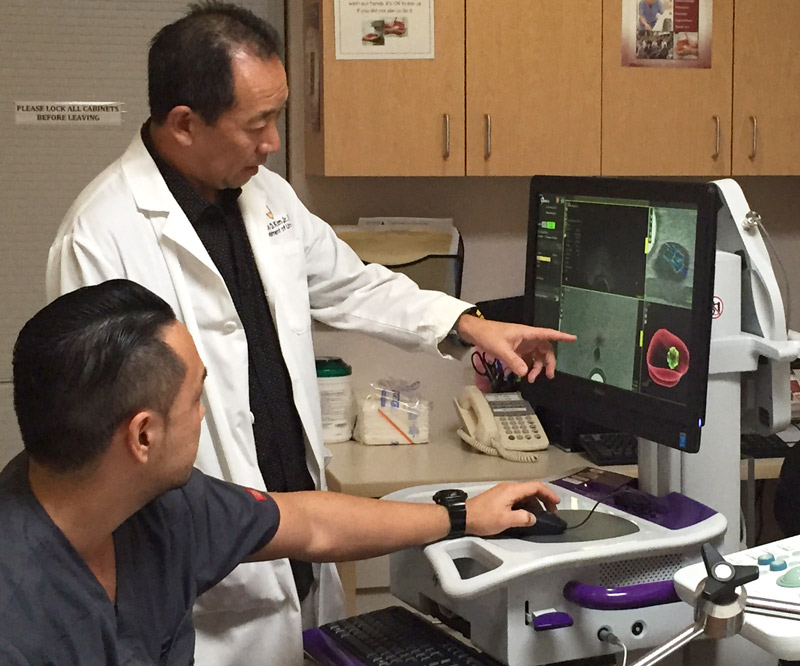
It’s Personal: Family History Often Points to Prostate Cancer Risk
More than 313,780 men in the United States will find out that they have prostate cancer this year.
Prostate cancer is the second most common form of cancer in American men, coming in second only to skin cancer.
Prostate cancer also is the second leading cause of cancer death in U.S. males.
(The leading cause of cancer deaths in men? Lung cancer.)
What is Prostate Cancer?
As its name suggests, prostate cancer occurs in the prostate – a walnut-shaped gland that produces seminal fluid used to protect, nourish and transport sperm.
Although the causes are unknown, prostate cancer, like all cancers, starts when cells begin to grow and divide more rapidly than normal cells die. This accumulation of abnormal cells forms a tumor that can grow and spread to nearby healthy tissue.
Prostate cancer usually develops slowly and remains in the prostate, where it may not cause any serious damage.
In its early stages, prostate cancer may have no signs or symptoms.
Prostate cancer that is more advanced, however, may cause:
- Urinating difficulty
- Incontinence
- Blood in the semen
- Pain or discomfort in the pelvic area
- Bone pain
- Erectile dysfunction
It is estimated that about one in eight men will be diagnosed with prostate cancer in his lifetime.
However, because of the nature of the disease, many men do not die from prostate cancer. In fact, more than 3 million men in the U.S. who have been diagnosed with prostate cancer at some point in their lives are still alive today.
Prostate Cancer Screenings
According to experts, the reason so many new cases of prostate cancer are found each year isn't because men are leading less healthy lives.
More screening is the main reason for the large increase in prostate cancer diagnosis, specifically screening done using the PSA test.
A PSA test involves taking a blood sample and checking it for a specific enzyme called "prostate-specific antigen," or PSA.
High levels of PSA can be a sign of prostate cancer, but also may be caused by other conditions that are much less harmful, such as prostatitis, reaction to certain medicines or recent ejaculation.
Another method to test for prostate cancer, the digital rectal exam (DRE), is less effective than the PSA in diagnosing prostate cancer but can sometimes find cancers in men with normal PSA levels.
During a DRE, the doctor will put a gloved finger into the rectum to feel the prostate gland for bumps or hard areas that may be cancerous.
Prostate Cancer Risk Factors
The choice to be screened for prostate cancer is a personal one. Before you decide to be tested, talk to your primary care provider about your risk for prostate cancer, including your personal and family history. Then, talk about the benefits and risks of testing.
Almost two out of every three prostate cancer diagnosis are in men age 65 or older.
If you are ages 55-69, discuss prostate cancer screening options with your doctor.
Some men are at higher risk for prostate cancer. Talk to your doctor about prostate cancer screening if you are age 40-54 and:
- Are African-American. African-American men are more likely to be diagnosed with prostate cancer and are twice as likely to be diagnosed with more deadly forms of the disease
- Have a father, brother or son who has had prostate cancer. If your father, brother or other close relative was diagnosed with prostate cancer, you have a higher chance of being diagnosed. This is especially true if two or more close relatives have been diagnosed, or if they were diagnosed before age 55.
While many of prostate cancer's risk factors – age, race, family history – cannot be controlled, there are lifestyle factors that can help lower your risk:
- Eat a plant-based diet.
- Get regular physical activity.
- Stay at a healthy weight.
If you still have questions or concerns, talk to your PCP about the risks and benefits of prostate cancer screening for you.
Published on: May 20, 2025




